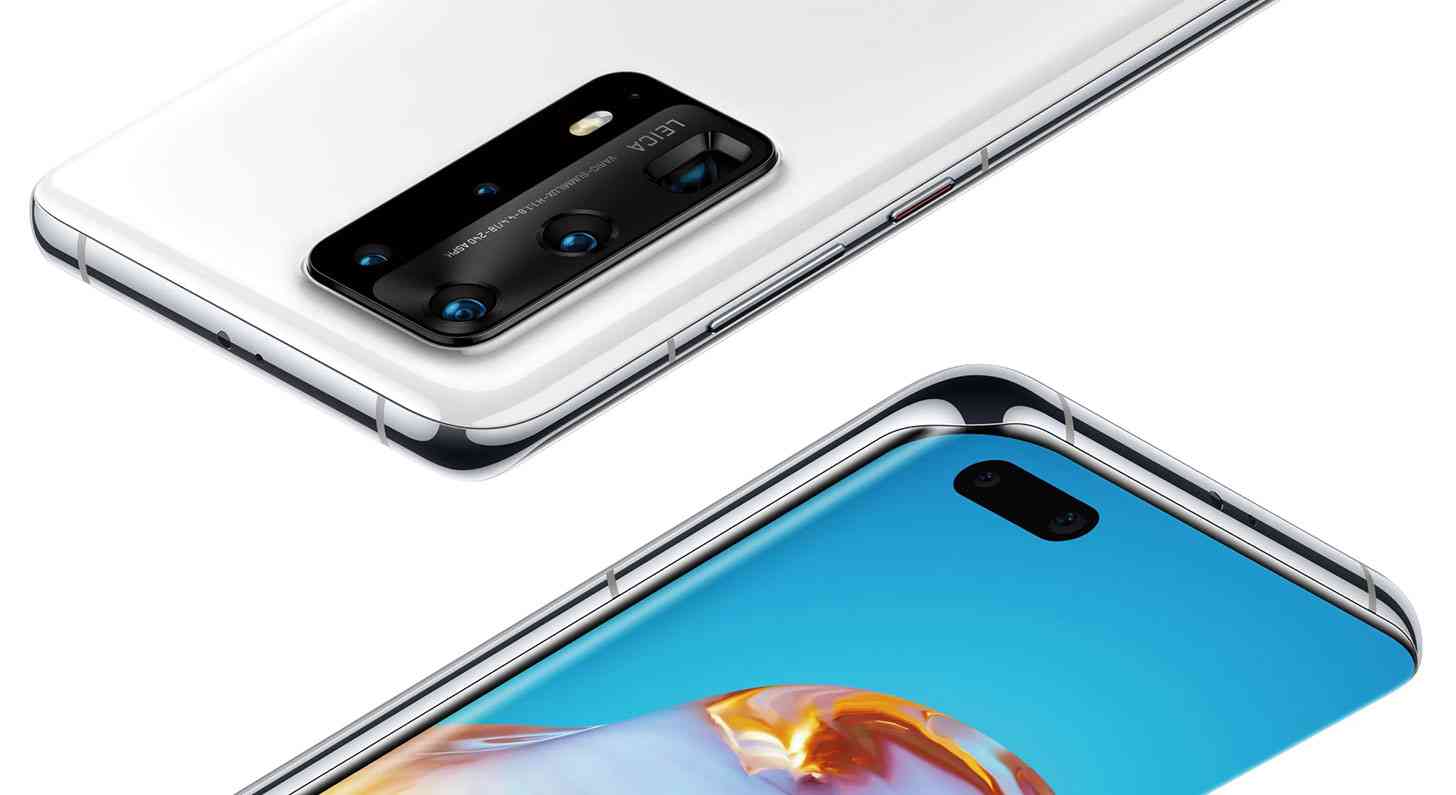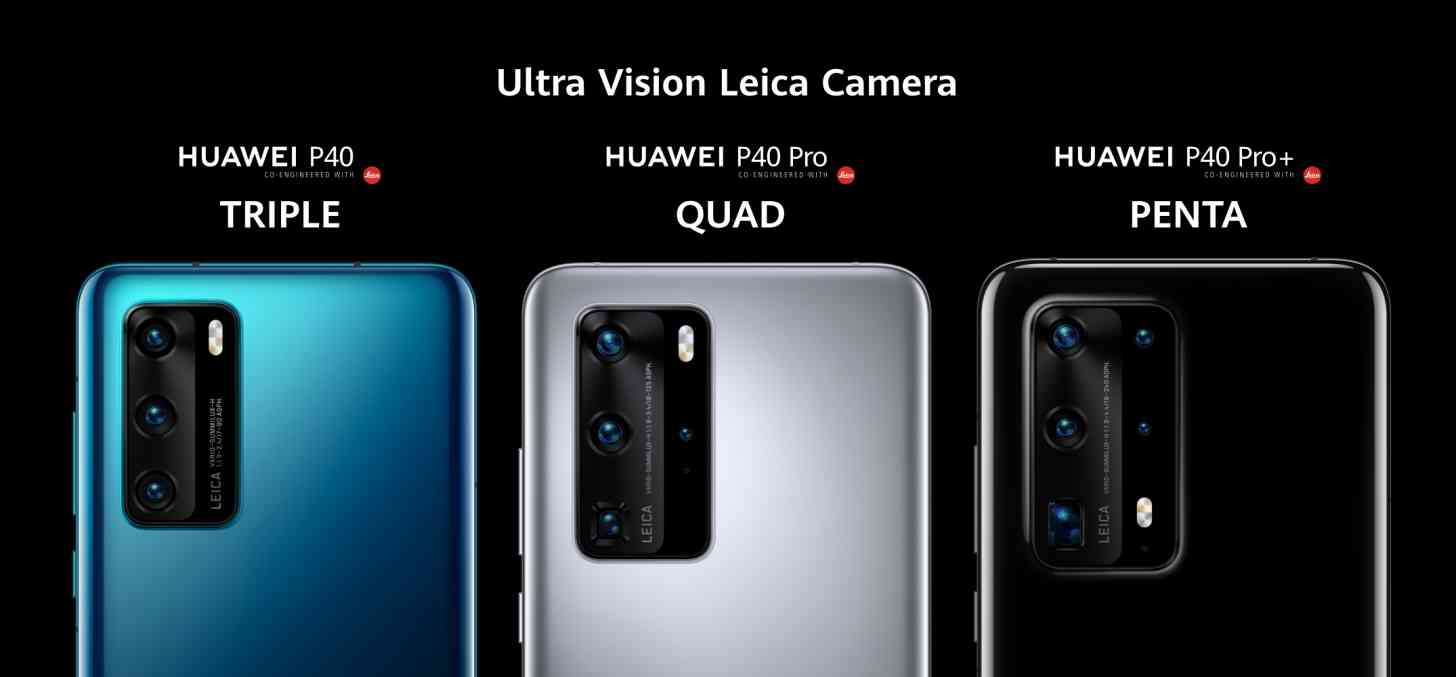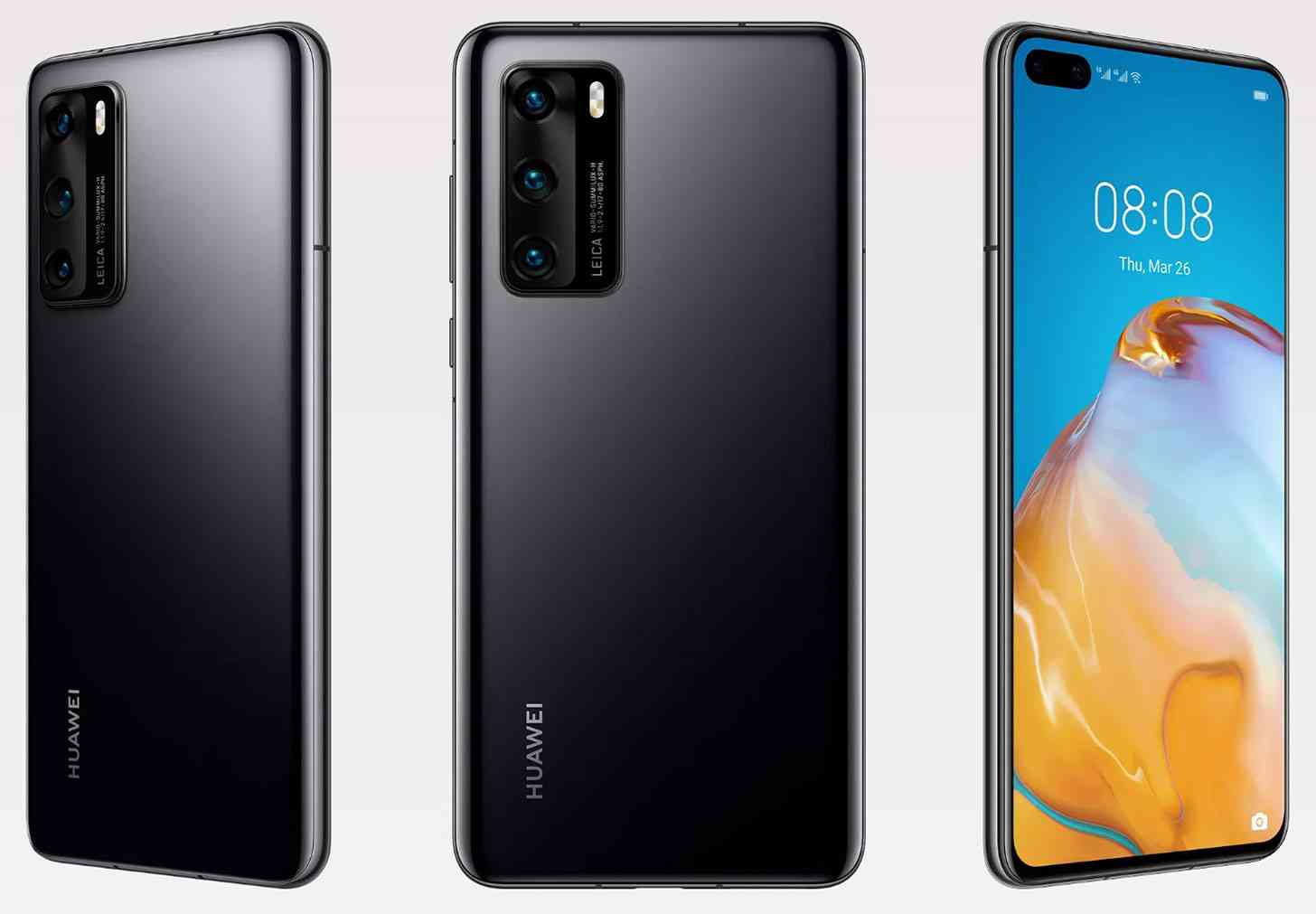
Huawei today took the wraps off of its newest flagship phones, complete with a new Plus model that managed to avoid leaking out previously.
The Huawei P40, P40 Pro, and P40 Pro+ are now official. As you might expect from new Huawei flagships, the P40 series places a major focus on camera performance. The P40 starts with a triple camera array, the P40 Pro moves up to a quad cam setup, and the P40 Pro+ features five cameras on its backside.
Each model starts with a 50MP Ultra Vision main camera with a 1/1.28-inch sensor, RYYB color filter, and octa PD autofocus. "Take in massive light and detail for super clarity," Huawei touts about this main snapper. Next up on the P40 Pro and Pro+ is a 40MP ultra wide angle Cine camera with f/1.8 aperture, while the regular P40 gets a 16MP ultra wide angle cam.

When it comes to zoom, the P40 Pro+ boasts a 100x SuperZoom Array that includes an 8MP camera with 10x optical zoom and f/4.4 aperture plus another 8MP camera with 3x optical zoom and f/2.4 aperture. Together these cameras offer 20x hybrid zoom and up to 100x max zoom.
Meanwhile, the P40 Pro features a 12MP telephoto camera with 5x optical zoom, 10x hybrid zoom, and 50x max zoom. The regular P40 includes an 8MP telephoto camera with 3x optical zoom, 5x hybrid zoom, and 30x max zoom.
To round things out, the P40 Pro and Pro+ add a 3D depth-sensing camera to help you create better portrait mode photos.
Around front, both the P40 Pro and Pro+ feature a 6.58-inch 2640x1200 OLED display with 90Hz refresh rate and quad curved display. This means that while most phones have curved edges on the sides of their displays, the P40 Pro and P40+ curve on all four sides. The standard P40 features a flat 6.1-inch 2340x1080 OLED screen.

There's a pill-shaped hole-punch in the upper left corner of the P40, P40 Pro, and P40 Pro+. In it there's a 32MP selfie camera with f/2.0 aperture and the P40 gets an IR camera while the P40 Pro and Pro+ get a depth camera that also supports face unlock with IR.
All three phones are powered by an octa-core Kirin 990 5G processor, meaning they've all got 5G support, and 8GB of RAM is included in all three models as well. The P40 starts at 128GB of storage while the P40 Pro gets 256GB and the P40 Pro+ has 512GB.
When it comes to battery size, the P40 gets a 3800mAh battery while the P40 Pro and Pro+ get a 4200mAh battery. The standard P40 features Huawei SuperCharge fast charging up to 22.5W, but the P40 Pro and Pro+ can get up to 40W wired fast charging. The P40 Pro adds up to 27W wireless fast charging and the P40 Pro+ can get up to 40W wireless fast charging.

The P40 features IP53 dust and water resistance while the P40 Pro and Pro+ get an IP68 rating. All three phones have a USB-C port for charging and headphones — there's no 3.5mm headphone jack here — plus NFC, face unlock, and an in-display fingerprint sensor.
Finally, Huawei's P40 series all come with EMUI 10.1 based on Android 10. Because of the US ban on Huawei, the new P40 phones don't come with Google apps or services. Huawei does have its own App Gallery for you to download apps from.
Huawei has also built its own digital assistant named Celia that works in English, Spanish, and French, and it's got its own video calling app named MeeTime.
The Huawei P40 and P40 Pro will launch on April 7th, with the P40 starting at €799 ($879 USD) for the 8GB/128GB model and the P40 Pro at €999 ($1,099 USD) for the 8GB/256GB version. Expect the P40 Pro+ to arrive in June at a price of €1399 ($1,538 USD) for the 8GB/512GB model.